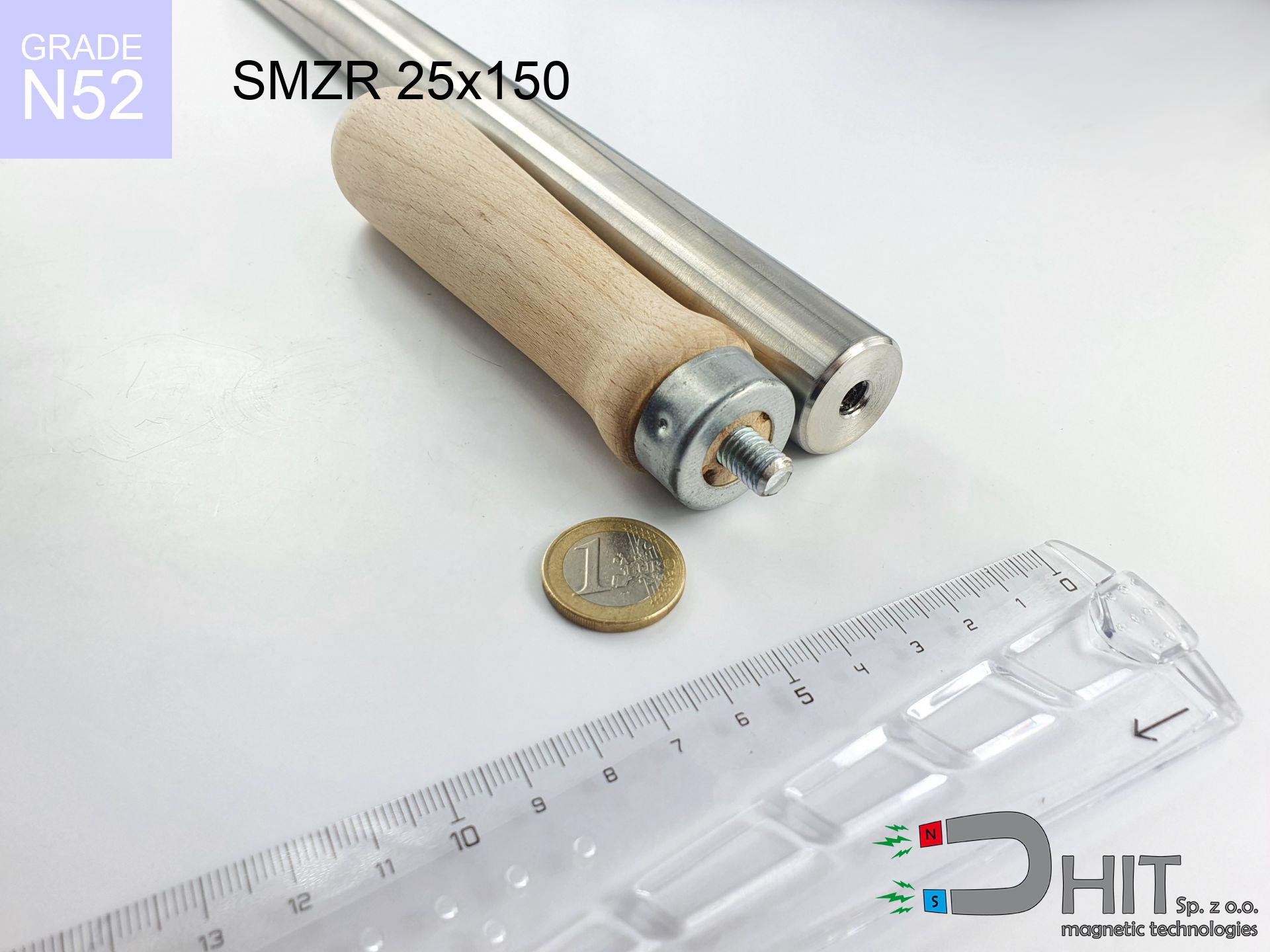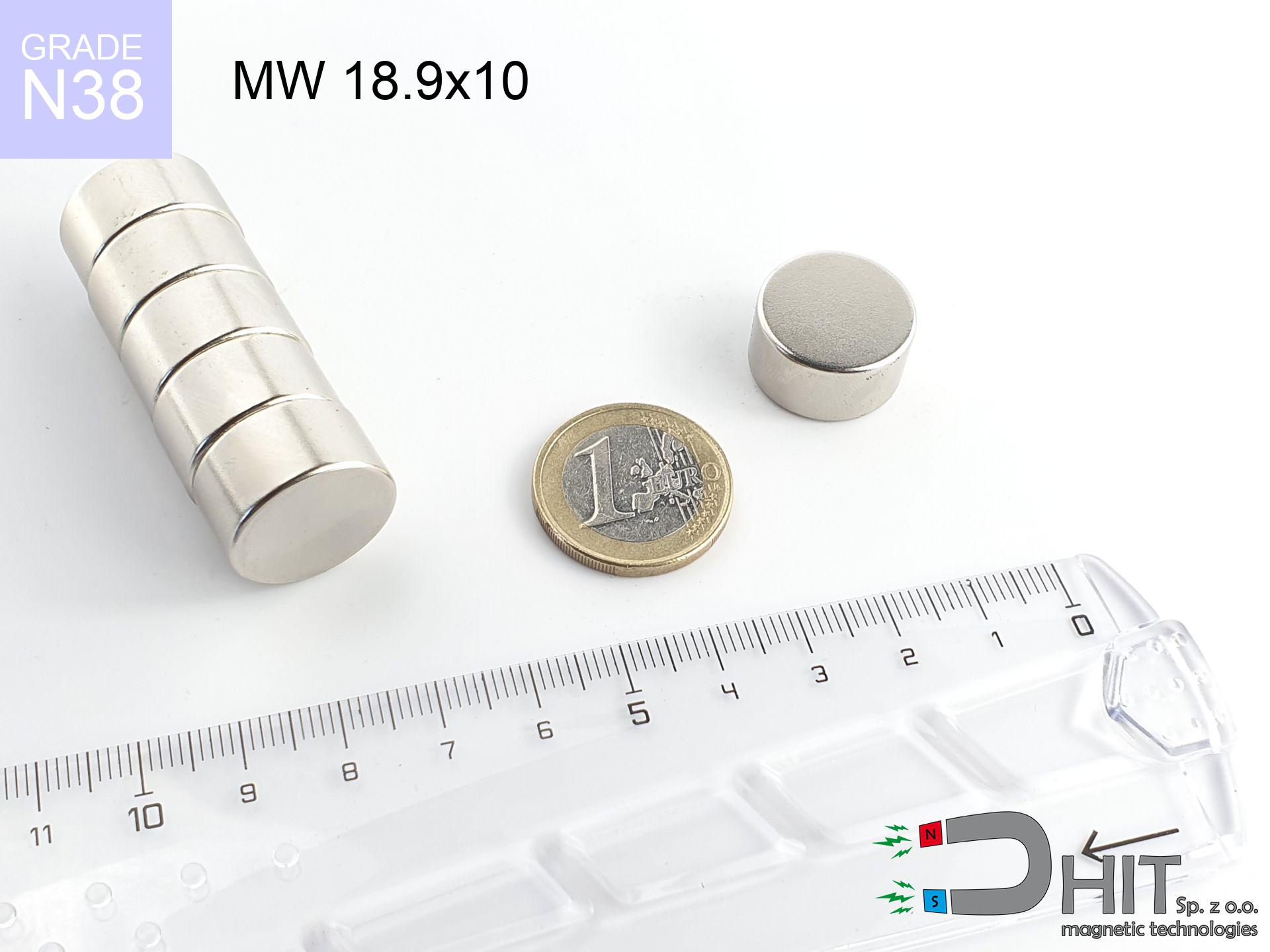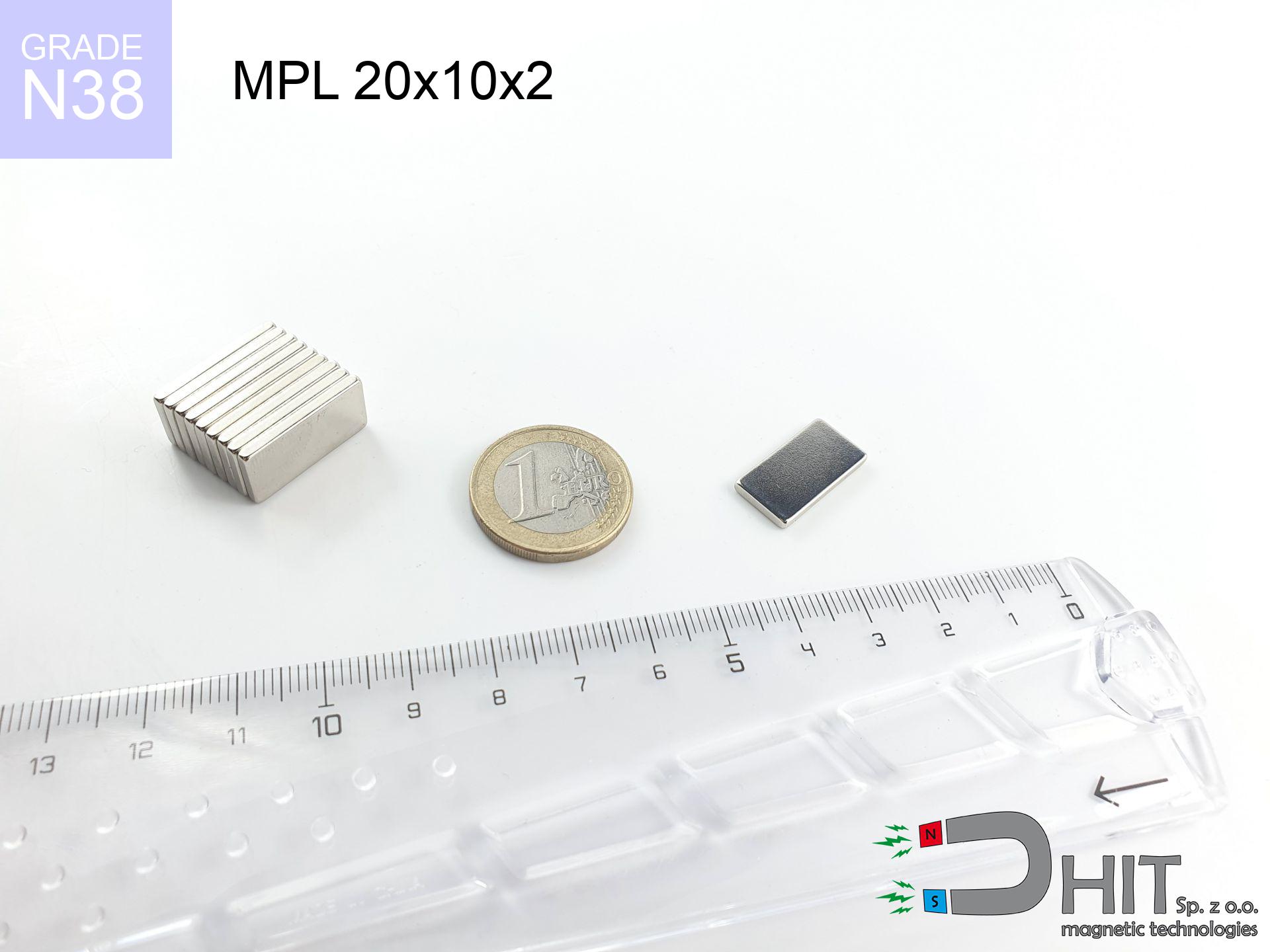SM 18x125 [2xM5] / N42 - magnetic roller
magnetic separator
catalog number 130270
GTIN: 5906301812722
diameter Ø
18
mm [±0,1 mm]
height
125
mm [±0,1 mm]
max. temperature
≤ 80
°C
catalog number 130270
GTIN: 5906301812722
diameter Ø
18 mm [±0,1 mm]
height
125 mm [±0,1 mm]
max. temperature
≤ 80 °C
276.75 ZŁ gross price (including VAT) / pcs +
225.00 ZŁ net price + 23% VAT / pcs
bulk discounts:
need more quantity?Don't know what to buy?
Call us tel: +48 22 499 98 98 or get in touch via form on our website. You can check the lifting capacity and the shape of neodymium magnets in our force calculator force calculator
Orders placed by 2:00 PM will be shipped on the same business day.
Specification: magnetic separator 18x125 [2xM5] / N42
Magnetic properties of the material N42
Physical properties of sintered neodymium magnets Nd2Fe14B
Choose recommended products
Advantages as well as disadvantages of neodymium magnets NdFeB.
Apart from immense strength, neodymium magnets have the following advantages:
- They do not lose power over time - after approximately 10 years, their strength decreases by only ~1% (theoretically),
- They are highly resistant to demagnetization by external magnetic field,
- Thanks to the shiny finish and nickel, gold, or silver coating, they have an aesthetic appearance,
- They exhibit very high magnetic induction on the surface of the magnet,
- Magnetic neodymium magnets are characterized by hugely high magnetic induction on the surface of the magnet and can operate (depending on the form) even at temperatures of 230°C or higher...
- Thanks to the flexibility in shaping and the ability to adapt to specific requirements – neodymium magnets can be produced in many variants of shapes and sizes, which amplifies their universality in usage.
- Key role in the industry of new technologies – find application in hard drives, electric drive mechanisms, medical apparatus or other highly developed apparatuses.
Disadvantages of neodymium magnets:
- They are prone to breaking as they are extremely fragile when subjected to a strong impact. If the magnets are exposed to impacts, it is suggested using magnets in a metal holder. The steel housing in the form of a holder protects the magnet from impacts and simultaneously increases its overall strength,
- High temperatures can reduce the power of neodymium magnets. Typically, after heating above 80°C, most of them experience a permanent reduction in strength (although it is dependent on the form and size). To prevent this, we offer special magnets marked with the symbol [AH], which are highly resistant to high temperatures. They can operate even at temperatures up to 230°C, making them an ideal solution for applications requiring high-temperature operation,
- They rust in a humid environment - during outdoor use, we recommend using waterproof magnets, such as those made of rubber or plastic,
- The use of a cover - a magnetic holder is recommended due to the limited production capabilities of creating threads or complex shapes in the magnet
- Potential hazard to health from tiny fragments of magnets pose a threat, if swallowed, which is crucial in the aspect of protecting young children. Furthermore, small elements of these products have the potential to complicate diagnosis in case of swallowing.
Handle Neodymium Magnets Carefully
Do not give neodymium magnets to youngest children.
Not all neodymium magnets are toys, so do not let children play with them. In the case of small magnets, they can be swallowed and cause choking. In such cases, the only solution is to undergo surgery to remove the magnets, and otherwise, it can even lead to death.
Do not bring neodymium magnets close to GPS and smartphones.
Magnetic fields can interfere with compasses and magnetometers used in aviation and maritime navigation, as well as internal compasses of smartphones and GPS devices. There are neodymium magnets in every smartphone, for example, in the microphone and speakers.
Dust and powder from neodymium magnets are highly flammable.
Do not attempt to drill into neodymium magnets. Mechanical processing is also not recommended. If the magnet is crushed into fine powder or dust, it becomes highly flammable.
Neodymium magnets can attract to each other due to their immense internal force, causing the skin and other body parts to get pinched and resulting in significant swellings.
In the case of placing a finger in the path of a neodymium magnet, in that situation, a cut or even a fracture may occur.
Neodymium magnets should not be near people with pacemakers.
Neodymium magnets produce strong magnetic fields that can interfere with the operation of a heart pacemaker. However, if the magnetic field does not affect the device, it can damage its components or deactivate the device when it is in a magnetic field.
The magnet coating is made of nickel, so be cautious if you have an allergy.
Studies show a small percentage of people have allergies to certain metals, including nickel. An allergic reaction often manifests as skin redness and rash. If you have a nickel allergy, try wearing gloves or avoid direct contact with nickel-plated neodymium magnets.
Magnets made of neodymium are highly susceptible to damage, resulting in their cracking.
Magnets made of neodymium are extremely delicate, and by joining them in an uncontrolled manner, they will crack. Magnets made of neodymium are made of metal and coated with a shiny nickel, but they are not as durable as steel. In the event of a collision between two magnets, there may be a scattering of fragments in different directions. Protecting your eyes is crucial in such a situation.
You should keep neodymium magnets at a safe distance from the wallet, computer, and TV.
Strong fields generated by neodymium magnets can damage magnetic storage media such as floppy disks, credit cards, magnetic ID cards, cassette tapes, video tapes, or other similar devices. In addition, they can damage televisions, VCRs, computer monitors, and CRT displays. You should especially avoid placing neodymium magnets near electronic devices.
Neodymium magnets are among the strongest magnets on Earth. The astonishing force they generate between each other can surprise you.
On our website, you can find information on how to use neodymium magnets. This will help you avoid injuries and prevent damage to the magnets.
Neodymium magnets can become demagnetized at high temperatures.
In certain circumstances, Neodymium magnets may experience demagnetization when subjected to high temperatures.
In order to illustrate why neodymium magnets are so dangerous, see the article - How very dangerous are very strong neodymium magnets?.

![SM 18x125 [2xM5] / N42 - magnetic roller SM 18x125 [2xM5] / N42 - magnetic roller](https://cdn3.dhit.pl/graphics/products/sm-18x125-2xm5-cij.jpg)





